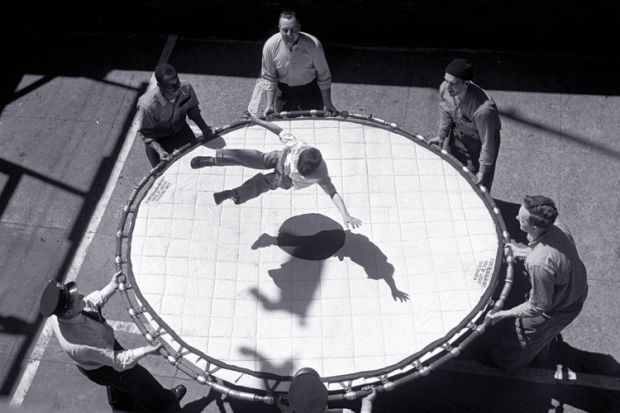Source: Getty
Catch-all: ‘the concept of dyslexia is so broad that it encompasses many things’
Too many students are being diagnosed as dyslexic, with the overall number registered as having the condition rising 40 per cent in just five years, an educational psychologist has argued.
According to the Higher Education Statistics Agency, there were 104,580 students with dyslexia in 2012-13, compared with 74,490 in 2007‑08.
The 2012-13 total was 22 times higher than the 4,750 dyslexic students registered in 1994‑95, although collection methods were different, which makes comparisons tricky.
Julian Elliott, professor of education at Durham University, who obtained the Hesa data, believes that too many students with mild literacy problems, such as poor spelling and grammar, are being wrongly diagnosed as dyslexic.
“The concept of dyslexia is now so broad that it encompasses so many things,” said Professor Elliott, a former special needs teacher who is now principal of Collingwood College at Durham.
“Dyslexia has gone beyond its original meaning of [a person] having a complex decoding problem,” he added.
Students who read perfectly well are being labelled as dyslexic, and IQ tests and colour perception are wrongly taken into account when diagnosing the condition, he added. Students, parents, universities and educational psychologists are complicit in the misdiagnosis of dyslexia because each party has an interest in a positive diagnosis given the extra disability funds available, Professor Elliott said.
Educational psychologists who frequently diagnose dyslexia, which can lead to students receiving a free laptop, printer and study support, are also more likely to be re-employed by universities, he added.
“People who are the guardians of the system are those with an interest in expanding the system,” he said.
Professor Elliott said that although he was keen for students to get the right assistance for any educational needs, dyslexia had now become a catch-all condition.
“It is almost de rigueur [to have dyslexia] as you get your laptop automatically,” he said. “I know there is a strong current of frustration in higher education that no one is tackling this problem,” he added.
However, not everyone views the change negatively.
The rise in the number of students with dyslexia should be expected and celebrated given improved detection of the condition at schools and universities, said John Rack, head of research, development and policy at the charity Dyslexia Action.
“We are better at dealing with dyslexia in schools, so you would expect more people to get through to university having coped with their dyslexia,” Dr Rack said.
“These figures show only about 4 per cent of students have dyslexia, which is at the bottom end of estimates for its prevalence in the population,” he added.
The growth in student numbers, as well as improved access to dyslexia testing, would also increase the proportion of undergraduates with the condition, Dr Rack added.
“As participation has gone up, you have a broader intake of students – not just the most advantaged – so you would expect the student body to more accurately mirror the general population as a whole,” he said.
Register to continue
Why register?
- Registration is free and only takes a moment
- Once registered, you can read 3 articles a month
- Sign up for our newsletter
Subscribe
Or subscribe for unlimited access to:
- Unlimited access to news, views, insights & reviews
- Digital editions
- Digital access to THE’s university and college rankings analysis
Already registered or a current subscriber? Login





